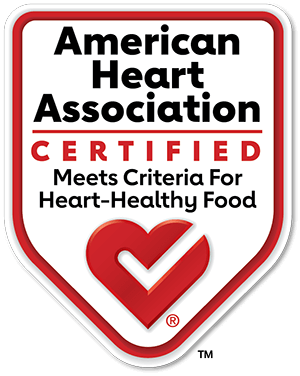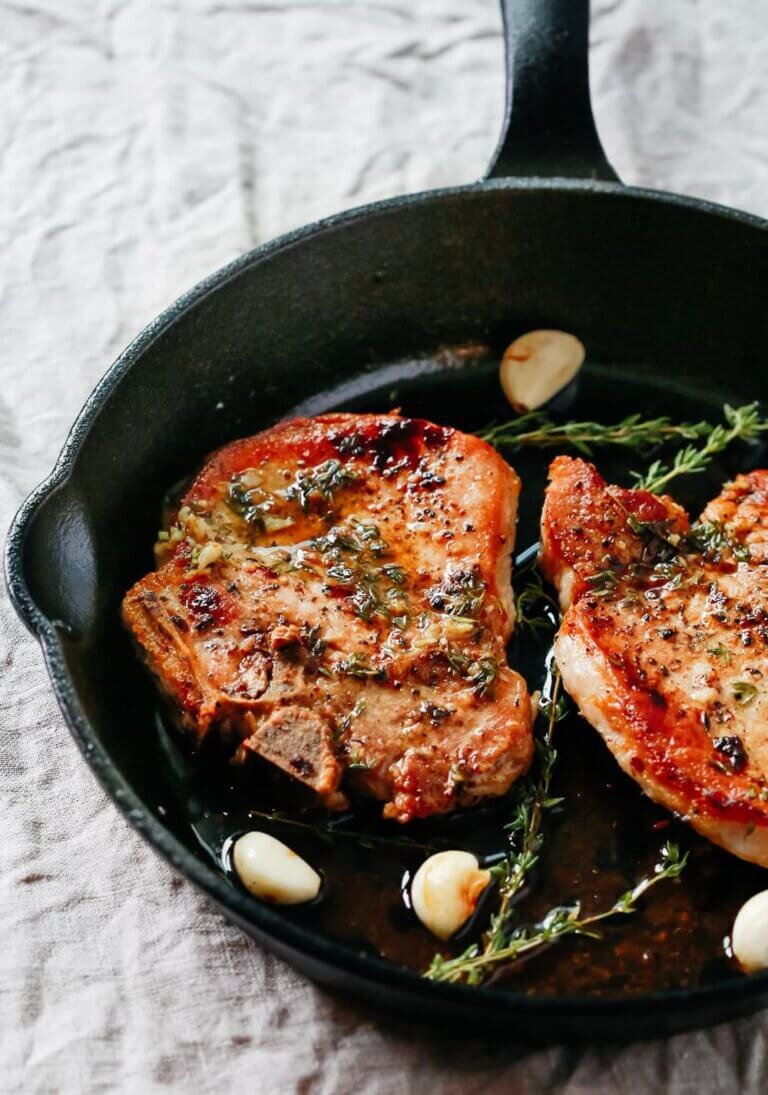Written by Andrew Akhaphong, MS, RD, LD, Mackenthun’s Registered Dietitian
Updated September 23, 2024
Heart-Healthy Choice
Pork is certified heart healthy by the American Heart Association.The pork cuts that meet the criteria include –
- New York chop
- Sirloin chop
- Ribeye chop
- Porterhouse chop
- Sirloin roast
- New York roast
- Ground, 96%
- Tenderloin
For a food item to earn the certification by the American Heart Association, at least 5 nutrient criteria must be met -(1)
- Total Fat: less than 6.5 grams per serving
- Saturated Fat: 1 gram or less and 15% or less calories from saturated fat per serving
- Trans Fat: Less than 0.5 grams per serving
- Cholesterol: 20 milligrams or less
- Sodium: Depends on food item category
- Naturally Occurring Nutrients: 10% or more of 1 of 6 nutrients per serving (Vitamin A, Vitamin C, iron, calcium, protein, or dietary fiber)
A 4-ounce serving of center cut pork chop provides -(2)
- Protein: 21 grams (43%)
- Total Fat: 6.1 grams
- Saturated Fat: 10%
- Trans Fat: 0 grams
- Cholesterol: 95 milligrams
- Sodium: 50 milligrams
To learn more about the American Heart Association’s Heart-Check program, click here to learn more

Benefits of Pork
The highest nutrient provided by pork is thiamin. At 50% of the Daily Value per serving, thiamine is a key B Vitamin in the metabolism of carbohydrates, protein, and fats.(2)
Thiamin is a water-soluble nutrient, meaning it is excreted easily through urination and the body is unable to store thiamine elsewhere. Therefore, thiamine deficiency is possible especially in those living with type-2 diabetes, or in a larger body, or have liver complications. Studies show low thiamine may not only complicate carbohydrate metabolism, but increase risk for heart failure, neuropathy, confusion, or delirium. This condition is known as wet beriberi.(3)
A serving of pork provides 30% of the Daily Value as Vitamin B6, also known as pyridoxine. Like thiamin, it is also critical for the metabolism of carbohydrates, protein, and fats; however, it is most important for glycogen metabolism to provide additional energy to the body.(2) Glycogen is stored carbohydrates in your muscle which acts as emergency energy. This is very important for endurance athletes like those who participate in triathlons, swimming, or cycling. Studies show athletes with low levels of Vitamin B6 have difficulties with concentration and motor skills when performing sports or exercise.(4)
Preparing Pork

In the past it was recommended to cook pork to an internal temperature of 165F degrees due to a parasite called, Trichinella spiralis. As agriculture science grew over the years the rate of this parasitic infection has greatly declined since the 1950’s.(6)
A common complaint of cooking pork to 165F degrees is the result of a dry and tough cut of meat. Today, the United States Department of Agriculture recommends cooking pork to an internal temperature of 145F degrees for best quality; however, consumers may choose to cook their pork to a higher internal temperature.(6)
Tender cuts like center cut pork cut, tenderloin, ribs, or belly may not need to be marinated as the acid could toughen the meat when left to marinate more than 30-minutes. It is best to marinate tougher cuts such as pork shoulder, hocks, or feet. If choosing to marinade, find your favorite recipe but be sure to use ¼ cup of marinade per pound of pork.(7)
If you would like to learn more about pork, please visit the link below to navigate you to the Pork Board.
Garlic Butter Baked Pork Chops
Oliva, Primavera Kitchen, February 25, 2025
What You Need:
- 2 medium pork chops
- Salt and pepper to taste
- 4 tablespoons butter, melted
- 1 teaspoon fresh thyme, chopped
- 2 cloves garlic, minced
- 1 tablespoon extra-virgin olive oil
What You Do:
- Preheat oven to 425F degrees. Season the pork chops with salt and pepper, set aside.
- In a small bowl, mix together the butter, thyme, and garlic. Set aside.
- In an oven-proof skillet, heat the olive oil over medium-high heat. When it is hot, add the pork chops. Sear on both sides for 2-3 minutes or until golden brown.
- Pour the garlic butter mixture over the pork chops. Put the skillet in the oven and cook until the pork chops reach an internal temperature of 145F degrees, about 10-14 minutes for cooking time.
- Remove from the oven. Using a spoon, baste the pork chops in the butter sauce left in the pan before serving.

References
- American Heart Association. Heart-check food certification nutrition requirements. n.d. Accessed April 9, 2024. https://heart.org/en/healthy-living/company-collaboration/heart-check-certification/heart-check-in-the-grocery-store/heart-check-food-certification-program-nutrition-requirements
- Pork. Pork nutrition. n.d. Accessed April 9, 2024. https://www.pork.org/nutrition/pork-nutrition/
- Kerns JC, Arundel C, Chawla LS. Thiamin deficiency in people with obesity. Adv Nutr. 2015; 6(2):147-153. doi: 10.3945/an.114.007526
- Ali Ghazzawi H, Ali Hussain M, Majdy Raziq K, Khaled Alsendi, K, Osama Alaamer R, Jaradat M, Alobaidi S, Al Aqili R, Trabelsi K, Jahrami H. Exploring the relationship between micronutrients and athletic performance: A comprehensive scientific systematic review of the literature in sports medicine. Sports. 2023; 11(6): 109. doi.org/10.3390/sports11060109
- United States Department of Agriculture. Fresh pork from farm to table. Updated August 6, 2013. Accessed April 9, 2024. https://www.fsis.usda.gov/food-safety/safe-food-handling-and-preparation/meat-fish/fresh-pork-farm-table
- Riches D. Tips for marinating pork. The Spruce Eats. Updated September 29, 2019. Accessed April 9, 2024. https://www.thespruceeats.com/how-to-marinate-pork-cuts-335547





